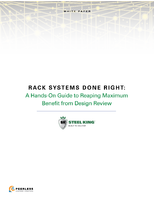NTSB makes safety recommendations to FAA.
Share:
Press Release Summary:
FAA should require Cessna Aircraft Company and other manufacturers whose restraint system designs permit an occupant to use inactive airbag restraint system not intended for use in his or her seat to modify restraint system designs to eliminate that possibility. FAA should also revise guidance and certification standards concerning restraint systems to prevent misuse scenarios, and require retrofitting of shoulder harnesses on general aviation airplanes that are not equipped with such restraints.
Original Press Release:
NTSB Safety Recommendations A-11-1 through -6
The National Transportation Safety Board makes the following safety recommendations to the Federal Aviation Administration:
Require Cessna Aircraft Company and other manufacturers whose restraint system designs permit an occupant to use an inactive airbag restraint system not intended for use in his or her seat to modify their restraint system designs to eliminate that possibility, and require them to modify restraint systems in existing airplanes to eliminate the possibility of misuse. (A-11-1)
Revise the guidance and certification standards concerning restraint systems to recognize and prevent potential misuse scenarios, including those documented in this safety study. (A-11-2)
Modify the special conditions for the installation of inflatable restraints on general aviation airplanes (at Federal Register, vol. 73, no. 217 [November 7, 2008], p.
66163) to provide specific guidance to manufacturers as to how they should demonstrate that the protection is effective for occupants that range from the 5th percentile female to the 95th percentile male. (A-11-3)
Require the retrofitting of shoulder harnesses on all general aviation airplanes that are not currently equipped with such restraints in accordance with Advisory Circular (AC) 21-34, issued June 4, 1993. (A-11-4)
Evaluate the potential safety benefits and feasibility of requiring airbag-equipped aircraft to have the capability to capture and record, at a minimum, data concerning crash dynamics and airbag deployment criteria that can be reviewed after a crash to determine whether the system performed as designed. (A-11-5)
Develop a system to track individual aircraft information about aircraft safety equipment, such as restraint systems, airbags, aircraft parachutes, and other specific aircraft equipment, designed to improve crash outcomes. (A-11-6)




